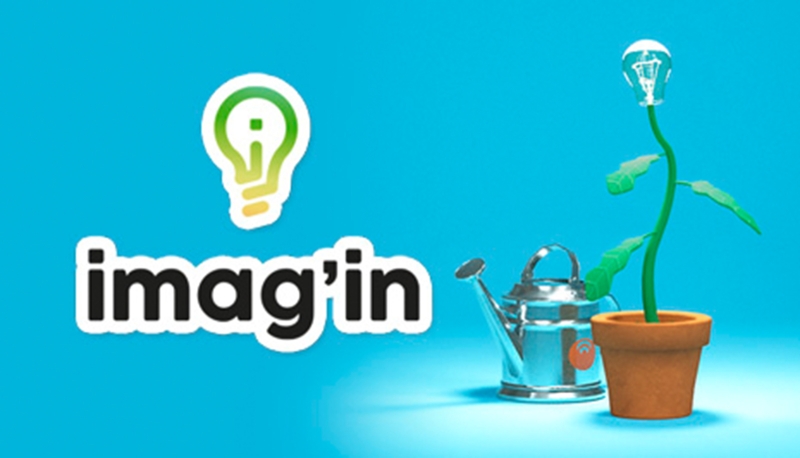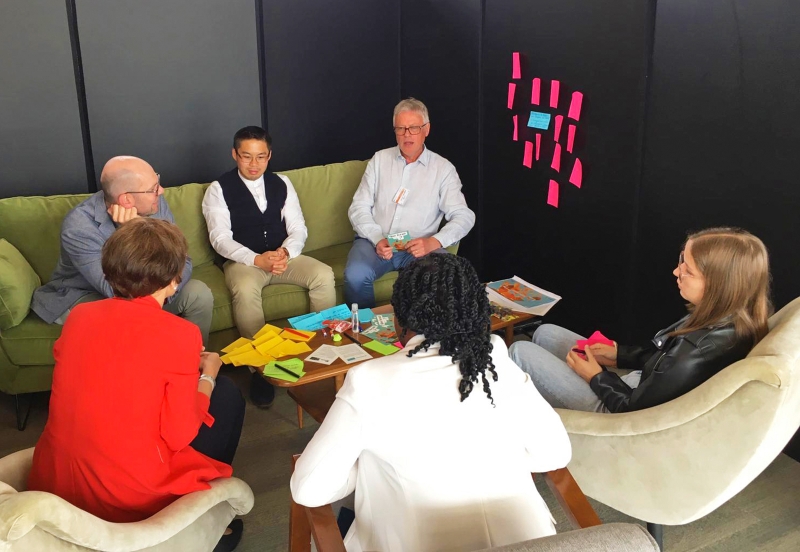BRGM organised its third in-house competition dedicated to innovation: “Imag’in”. © BRGM
Innovation at BRGM
Innovation at BRGM: an active policy further reinforced by the new state objectives contract
As is the case each year, BRGM has sought to apply the fruits of its research in geosciences; indeed, this is one of our primary missions. Over recent years, our organisation has become increasingly aware of the need to innovate and has actively oriented the work of its R&D department, researchers and engineers towards this goal; this policy continued through 2022 and even reached a new milestone with the new COMP (2023-2027 Objectives, Resources and Performance Contract).
In view of the current context (climate change, geopolitical tensions, resources, etc.), BRGM has an even more pressing need to achieve its own paradigm shift or “Copernican revolution” by transitioning from applied research (although that does not mean abandoning it) to innovation, from patents to start-ups, and from the macroscopic scale to a more case-specific level in its day-to-day work.
Concept maturation, open innovation, internal culture and co-innovation
Let us highlight a few key aspects of the innovation approach at BRGM in 2022. First of all, we have actively pursued the in-house scheme aimed at taking innovative concepts to maturity, with some 30 concepts in the portfolio at the end of 2022. All the concepts were produced by BRGM staff and have the potential to be applied in the real economy. This initiative – taking in-house concepts and maturing them for external application – was set up by Dominique Morin, BRGM’s former Head of Innovation, and the process is now well established. The thirty projects involved in the maturation process are divided equally into three areas: digital services, the development of added-value applications for specialised knowledge, methods and technologies, and industrial processes. The process enables concepts for products or services to mature and develop, while assessing their economic potential and orienting them towards the real economy.
Another key aspect is the active development of open innovation, for example through the TInnov event, a collaborative symposium devoted to invention and innovation, with collective discussion workshops and presentations aimed at stimulating creativity and ideas to address the challenges of geoscience services in the future. The theme of the 2022 event was: “Ensuring the responsible supply of mineral resources to build resilient and sustainable industries.” We also focused on reinforcing the in-house innovation culture, by creating an innovation methodology guidebook for our staff, and organising the Imag’in in-house innovation competition, which was won by the Digit Rock concept. In addition to this, in December 2022, we organised the first in-house Innovation Days, which included a meeting with representatives from the regional innovation ecosystem, an exhibition of innovative concepts and a talk by Dominique Morin.
Finally, we also developed our relations with external innovation ecosystems, and promoted co-innovation schemes (with companies, start-ups, etc.). One example of this is the Saterre project, which was born out of the TInnov 2019. In 2022, a call for start-ups was launched for this project, supported by the Cap Digital competitiveness cluster. Saterre is a remarkable co-innovation project, since it brings together private partners (Valgo and SCE), the start-up Terranis (which won the call for proposals and will carry out the proof of concept (POC)) and a local authority (the Orléans Metropolitan council, since the area will act as the pilot area for the POC, see inset box).
Creation of a BRGM innovation division
The 2023-2027 COMP provides for the creation of a BRGM innovation division. The aim is to group together under a common banner and identity all of BRGM’s resources (from the operational departments to the SAGEOS investment fund), in order to enhance BRGM’s brand image as an innovator and clarify the roles of all of its services, whether they be for internal or external use.
Moreover, the Innovation division will be firmly oriented towards the business sector. This relevance of this policy is reflected by the SOLSA project, which won the BRGM 2022 innovation prize. This led to the creation of a company (Inel-Innov), in partnership with Eramet (see inset box). In 2023, BRGM will take things even further, by organising a competition for start-ups and experimenting with a formatted co-innovation approach with companies.
These initiatives are in line with the new COMP objectives, which aim to increase the number of maturing projects by 50% and further boost the innovation culture. The aim is to develop a strong in-house culture and promote BRGM’s image as an innovator to the outside world.
Innovation workshop at Lab’O in Orléans during the TInnov day in June 2022. © BRGM
Solsa
SOLSA is an expert system that combines real-time, on-site analyses for the multi-scale characterisation of mineral materials. It combines sonic drilling technologies, analytical equipment and computer technology in order to improve exploration efficiency and provide a high-value-added contribution to the geometallurgy industry.
SATERRE
SATERRE is a decision-support tool that is integrated into sustainable spatial planning projects, in order to enable local authorities to adapt and improve their town planning strategies and schemes (PLUs).







